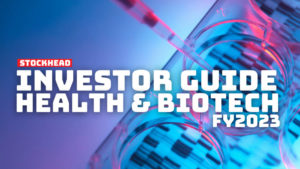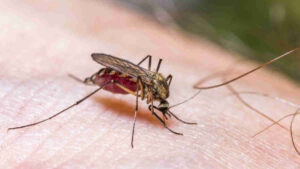- ASX health stocks 0.3% in line with broader markets in first week of 2024 trading
- Flurry of M&A activity sector at the end of 2023 set to continue into the new year
- With a heavy focus on the US, Telix Pharmaceuticals looks to dual list on NASDAQ
Healthcare and life sciences expert Scott Power, who has been a senior analyst with Morgans Financial for 26 years, explains what the movers and shakers have been doing in health and gives his ASX Powerplay.
Is it your New Years resolution to do more exercise? A new study has found regular moderate to vigorous physical activity is linked to increased brain size in crucial areas such as gray and white matter, as well as the hippocampus.
Washington University School of Medicine, St. Louis researchers studied MRI brain scans from 10,125 healthy individuals, averaging 53 years in age, with 52% being male, who self-reported their exercise levels.
Physical activity, defined by elevated heart and breathing rates sustained for at least 10 minutes, were studied in relation to brain volume, taking into account various other factors.
The benchmark to distinguish between physically active and inactive adults was set at 2.5 days of activity per week, considerably less than current health recommendations.
Around three quarters of the participants reported engaging in moderate to vigorous physical activity around four days per week.
Those who were physically active were generally younger and predominantly white, with fewer instances of hypertension and type 2 diabetes.
After accounting for various factors, an increase in days of moderate to vigorous physical activity was associated with greater normalised brain volume in several regions, including total gray matter, white matter, hippocampus, and frontal, parietal, and occipital lobes.
The study was published in the Journal of Alzheimer’s Disease.
To markets….
And ASX health stocks could do with a bit more movement in the upwards direction this week.
At 12pm (AEDT) Friday the S&P ASX 200 healthcare index (ASX:XHJ) was down 0.3% for the first week of trading in 2024, while the benchmark S&P ASX 200 (ASX:XJO) had fallen 1.4% for the same period.
Power says after a strong end to 2023 there appears to be a bit of profit taking.
“The NASDAQ was up 44% for the year, the S&P was up 24% and the Dow was up 14% so it was a massive year in the US,” Power says.
“The Australian market didn’t quite keep pace but still it was a pretty solid year so a bit of profit taking is not surprising.”
Focus on M&A activity
Power says 2023 ended with a flurry of M&A activity and that is set to continue into 2024 across the market including healthcare.
He says there was the bid for health imaging company Volpara Health Technologies (ASX:VHT) from South Korean company Lunit, Inc for $1.15/share valuing the company at ~$300 million.
VHT entered into a scheme implementation agreement with the deep learning-based medical AI company in December, but a final shareholder approval will still need to be sought at a scheme meeting of shareholders expected to be held in early Q2 2024.
There was also a bid for Probiotec (ASX:PBP), a manufacturer, packer and distributor of a range of prescription and over-the-counter (OTC) pharmaceuticals, complementary medicines and consumer health products.
PBP has entered into a binding scheme implementation deed with listed Indonesian pharmaceutical manufacturer PT Pyridam Farma following a $3/share offer which it says implies an equity value of ~$251 million and enterprise value of ~$326 million.
“Then if we look overseas there has been quite a lot of M&A activity,” Power says.
He says big Pharma Bristol Myers Squibb will buy Karuna Therapeutics for US$14 billion and gain a promising new schizophrenia drug to enhance its growth throughout the rest of 2020s with patents on its older therapies to start expiring later this decade.
Also in December, Bristol Myers Squibb announced plans to acquire radiopharmaceutical therapeutics company RayzeBio,for US$4.1 billion.
Another big pharma Eli Lily agreed to purchase Point Biopharma Global for US$1.4 billion in October last year, marking its official entrance into the radiopharmaceutical therapeutic space.
“That is quite a hot area and relevant to the likes of Telix Pharmaceuticals (ASX:TLX) and Clarity Pharmaceuticals (ASX:CU6) over here in Australia,” Power says.
“The question we’re asking ourselves is will the M&A activity likely continue?
“Our view is it will, as particularly overseas you have the larger pharmaceutical companies trying to strengthen their portfolio.”
He says Big Pharma may have patents due to expire so it will want to fill that gap or could be sitting on a lot of cash having not purchased any other companies or rights to new drugs for a while.
“The market has been by and large quite depressed for a couple of years so there’s some pretty good value out there,” he says.
Hit and miss with M&A activity at home in 2023
Power says while there was some M&A activity in the healthcare space in 2023 some of it worked and some of it didn’t.
The merger between pathology services operatators Australian Clinical Labs (ASX:ACL) and Healius (ASX:HLS) fell over after opposition from the Australian Competition and Consumer Commission, who said it would lead to a deterioration of competition in the sector.
Private hospital giant Ramsay Health Care (ASX:RHC) saw a more than $20 billion takeover from a consortium led by US investing giant KKR fall through in August.
KKR pulled out of its indicative proposal to acquire 100% of the shares in RHC by way of a scheme of arrangement at $88/share all cash offer.
“I wouldn’t be surprised if there is another bid for Ramsay, particularly given where its share price has fallen back to now,” Power says.
He says there are other healthcare companies like Regis Healthcare (ASX:REG) in the aged care space and fertility play Monash IVF Group (ASX:MVF) which could also be a takeover target.
“Monash is the remaining listed IVF player in Australia and their business has been going very well and growing with a large market share so that is a potential target for one of the big international groups,” he says.
“In a lot of areas they are probably leading the industry in Australia.
“We wouldn’t be surprised to see more M&A activity.”
Telix Pharmaceuticals plans dual NASDAQ listing
On Friday TLX announced it is is considering an IPO of American depositary shares (ADSs) representing its ordinary shares in the US and listing on the NASDAQ.
TLX has a market cap of around $3.5 billion (US$2.3 billion) making it the world’s fourth largest radiopharmaceutical company after Switzerland’s Novartis AG (market cap US$201 billion), Germany’s Bayer AG (US$35 billion) and US-based Lantheus (market cap US$4 billion).
Radiopharmaceuticals are considered a new class of drugs linking a radioisotope to a molecule capable of targeting cancer cells, making it possible to deliver radiation directly to cancer cells and limiting the impact on healthy tissue.
Eli Lily along with Bristol Myers Squibb’s entrance into radiopharmaceuticals has further shone a spotlight on the therapeutics as an important emerging class in oncology.
More than 90% of TLX’s annualised $500 million revenues comes from the US market and 25% of the company’s shareholders are US-based institutions and funds. Furthermore, 70% of its workforce is based in the US.
A recent rally in US biotechnology stocks has raised expectations of a turnaround from the sector’s worst run in decades and is also believed to be behind TLX’s planned NASDAQ listing at this time.
Biotech stocks have suffered from rising interest rates and a backlash to pandemic-era euphoria. However, a shift in interest rate expectations and potential cuts in 2024 saw the NASDAQ biotech index rise 14% in November and more than 11% in December 2023.
“Telix’s planned moved to US exchange will expand breath of investors and given the interest in the radio pharmaceutical space this move seems well timed,” Power says.
The VHT, PBP, TLX, CU6, ACL, HLS, RHC, REG & MVF share price today:
CSL’s heart-stopping catalysts to watch in 2024
Power says Australia’s biggest healthcare name CSL (ASX:CSL) will be worth keeping an eye on in 2024 with several new products and late-stage R&D programs approaching fruition.
He says the big one to watch is Phase 3 trial results of CSL’s therapy to reduce recurrent heart attacks called CSL112, which has finished recruiting.
CSL112 aims to reduce the risk of recurrent heart attacks that survivors experience in the first 90 days of their initial attack, with results of the trial forecast for early 2024.
“It’s an interesting catalyst for CSL and one which investors could be keeping an eye on,” Power says.
“CSL itself itself has had a nice share price re-rate over the last couple of months.”
Morgans has an Add rating and 12-month target price of $328.20 on CSL.
ScoPo’s Powerplay – Mach7 eyes profitability in 2024
Mach7 Technologies (ASX:M7T) is Power’s pick of the week and sees strong growth for health imaging stock in 2024.
He expects several new contract wins, continued expansion of the pipeline with the contract renewal profile presenting an opportunity to renegotiate pricing for its viewer product.
M7T in December announced a renewed five-year subscription deal with Sentara Healthcare for its Enterprise Imaging Platform and eUnity Diagnostic Viewer.
The renewed contract holds a total minimum value of $10.2 million and is expected to generate Annual Recurring Revenue (ARR) of about $2 million.
“They have a growing sales order book, forecast of sales of greater than 20% for the next couple of years and they’re winning some big deals,” Power says.
“We’re forecasting them to be profitable this year which is always an interesting turning point and should attract more investor eyeballs onto the stock.”
Disclosure: The author held shares in CSL and Mach 7 Technologies at the time of writing this article.
The views, information, or opinions expressed in the interview in this article are solely those of the interviewee and do not represent the views of Stockhead. Stockhead has not provided, endorsed or otherwise assumed responsibility for any financial product advice contained in this article.
You might be interested in











